In 1915, a tropical storm dropped nearly 11 inches of rain on St. Louis in just 17 hours, causing a devastating flood. Claiming 11 lives and the homes of 1,025 families, the flood focused public and government attention onto the problems of the river.
USA


The Chamberlain is the only surviving bridge of the original five. The others were replaced as the river rose due to flood control dams put in place over time.
The 1.5 mile Lacey V. Murrow Bridge was the largest floating structure in the world and the first to be built of reinforced concrete when completed in 1940. The bridge consisted of typically 300-foot long pontoons floated to site and rigidly connected to form a continuous structure and incorporated a unique floating concrete draw-span to allow for passage of marine traffic. The original floating structure, constructed by Pontoon Bridge Builders, was accidentally sunk in 1990 during a major renovation effort and was replaced by 1993.

"Who in Europe, or in America for that matter, knows that Kansas City is one of the loveliest cities on earth? [...] the residential section is a masterpiece of city planning [...]; Few cities have been built with so much regard for beauty."

The tower was designed to rest on a continuous reinforced concrete mat, 4 feet thick, with the base of the slab 24 feet below street level.
What makes the Texas Commerce Bank Building revolutionary in the civil engineering world is not so much the building itself, but its foundation. Initial studies for the type of foundation to be used began in the fall of 1927. William E. Simpson, the building's chief structural engineer, suggested using a mat foundation, something new for Houston's multistory buildings.
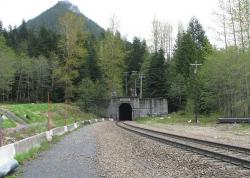
In the years following the Civil War, the land west of the Mississippi River was being settled and the Pacific Northwest explored. There remained, however, a large portion of Montana, Idaho, and Washington that contained enormous quantities of timber and minerals, but was not accessible by rail. By far the most grueling stretch was the Stevens Pass area in the Cascade Mountains.

San Antonio's River Walk, a catalyst for abundant commercial and tourism enterprise, is generally regarded by cities and urban planners throughout the world as a prototype for the development of urban riverfront sites. The River Walk's success, however, would not have been possible without a series of flood-control and architecture projects completed in the first half of the 20th century that relied heavily on civil-engineering expertise.
After more than 50 years of contention and debate, dredging began in 1911 on an eight-mile channel connecting Puget Sound, Seattle's gateway to the Pacific, to two inland freshwater lakes, Lake Washington and Lake Union. With the completion of the Lake Washington ship channel and Chittenden locks, coal and logs from the interior had a dedicated water route to the ocean, and the city's 4 1/2 miles of coastal harbor burgeoned into 100 miles of commercial, industrial and recreational piers and wharves.
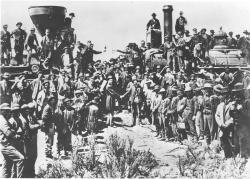
"May God continue the unity of our Country as this Railroad unites the two great Oceans of the world."
- Inscription on the ceremonial Golden Spike
The symbolic Golden Spike, staked in Promontory, Utah in 1869, marked the completion of the first transcontinental railroad, joining the Union Pacific Railroad from the East and the Central Pacific Railroad from the west.
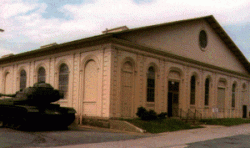
The Watervliet arsenal complex originally was built to house and manufacture weapons for the War of 1812. During the Civil War, it specialized in gun cartridges and artillery carriages. The facility today is a primary site for making state-of-the-art tank cannon, howitzers, mortars, and recoilless rifles.

The National Road was the first interstate highway in the United States, and the first roadway to be financed with federal money. Authorized by Congress during the administration of Thomas Jefferson in 1806, the road was built over time and in sections from Cumberland, Maryland, westward through…
Read More
Navajo Bridge spans Marble Canyon, 470 feet above the Colorado River in Grand Canyon National Park. It was considered the highest steel arch bridge in America when completed.
The Navajo Bridge (also known as the Grand Canyon Bridge) was built in 1929 by the Arizona Highway Department and…
Read More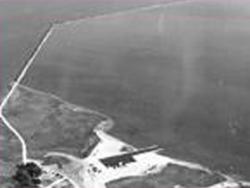
In 1794, the Delaware legislature authorized a lottery to fund the erection of ice piers in the harbor at New Castle. The ice harbor was designed to protect anchored ships from storms and ice. At the time, New Castle served as the principal winter port for ships from the Port of Philadelphia…
Read More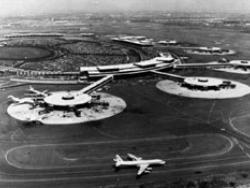
In May 1927, the same month of Charles A. Lindbergh's famous transatlantic flight from New York to Paris, a fact-finding commission appointed by the U.S. Secretary of Commerce concluded that Newark would be the ideal location for an airfield to serve the greater New York/New Jersey metropolitan…
Read More
This machine, designed by Alton S. Newell, efficiently reduced automobile bodies into scrap metal for recycling. A body was fed into the shredder at a controlled rate, and rotating hammers, driven by a 500-hp motor, shredded it into small pieces that were easily shipped. The process took about…
Read More

Norris Dam impounds the Clinch River, a mountain tributary of the Tennessee River. The facility stands as a tribute and symbol of the birth of the Tennessee Valley Authority (TVA). Given broad jurisdiction over resource development in the watershed (a 40,000-square-mile basin comprising parts of…
Read More
The Northern Pacific High Line Bridge No. 64, built between 1907 and 1908, has continued to perform yeoman service in the uninterrupted flow of the Nation's commerce. Nearly, 100 years after this bridge officially opened, it still carries 125-ton car unit coal trains, double stack container…
Read More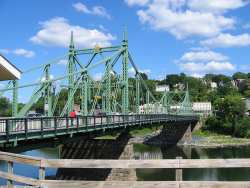
The crossing of the Delaware River at Easton, Pennsylvania, provided a central link in travel from the northeastern seaboard to America's inland territories throughout the 18th and early 19th centuries. From 1806 to the mid-1890s, travelers used a landmark wooden structure built by noted bridge-…
Read More
The N.S. Savannah was the first nuclear-powered cargo-passenger ship, built by the New York Shipbuilding Corporation at Camden, New Jersey. The 74 maximum-power thermal megawatt pressurized-water reactor was supplied by the Babcock & Wilcox Company. Nearly 600 feet long with 22,000-tons…
Read More
For more than a century, scientists at Rockefeller University have enhanced our understanding of the molecular basis of life — specifically the relationship between the structure and function of nucleic acids and proteins. They showed that DNA transfers genetic information and that the sugars…
Read More
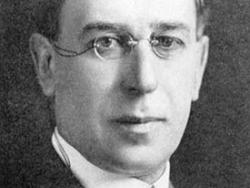
In 1900, Moses Gomberg, Professor of Chemistry at the University of Michigan, confirmed the existence of a stable, trivalent organic free radical: triphenylmethyl. In so doing, he challenged the then prevailing belief that carbon could have only four chemical bonds. Gomberg’s discovery made a…
Read More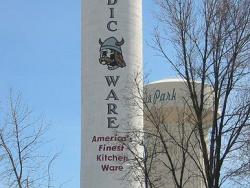
No image dominates the Midwestern landscape like the monolithic grain elevator, whose present shape and construction owe much to grain company operator Frank Peavy and architect-builder Charles Haglin.
Wanting to improve on the flammability and cost of traditional wood-cribbed…
Read More
Water wheels have been used to power mills and pumps for centuries. However, the traditional water wheel was inefficient: water hitting a bucket would splash back against the next bucket, slowing the wheel. This is especially true when water is delivered to the buckets under very high pressure…
Read More
The Pennsylvania Turnpike was the first American paved highway of the automobile era in which tolls alone were expected to pay all project costs. The 160-mile roadway, which cut an east-west path from Pittsburgh to the state capital of Harrisburg, was considered a revolutionary example of…
Read More
Philadelphia City Hall was the largest masonry load-bearing wall building in the world at the time of its completion in 1901, stood as the tallest occupied building in the United States until 1909, and still is the largest city hall in the United States. The building covers 14.26 acres,…
Read More
After an initial difficulty in attracting customers (who were used to getting their water from public pumps and private wells and cisterns), Philadelphia's waterworks soon couldn't keep up with demand. John Davis and Frederick Graff designed a complete remodeling of the system in 1811 so that it…
Read More
This was the first successful machine for mechanizing the identification and price marking of retail merchandise. At a single stroke of the operating handle, the machine formed a tag from a roll of stock, imprinted it with price and other information, formed a wire staple, and stapled the tag to…
Read More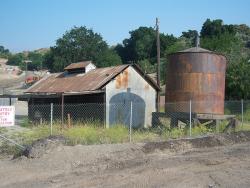
The economic situation in the whale oil business (for lighting), coupled with the increased demand for lubricants, stimulated growth in the U.S. petroleum industry. The drilling of the heavy, sulfurous, and asphaltic California crude began in the 1870s at the Pico Canyon area, using the…
Read More

